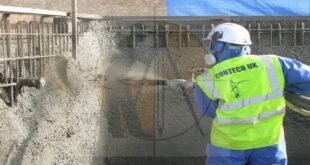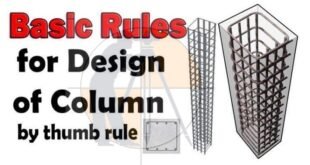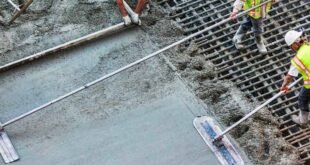Methods of Concrete Column Repair for Damages and Cracks Repair of Concrete Columns for Cracks and Damages Before starting the repair of a concrete column, the axial dead load, axial live load, horizontal load and its associated moments must be known. Repairs to concrete columns can be divided into two …
Read More »Civil Site Engineer Must Know +18 Civil Engineer Tips And Trick
Civil Site Engineer Must Know +18 Civil Engineer Tips And Trick Civil site engineers should know the following tips and tricks. Either memorize them or have a list readily available. Minimum thickness of slab is 125mm. Absorption of water should not be over 15 percent. Lapping is unaccepted for the …
Read More »What is the Concrete Discharge Time Requirements
What is Concrete Discharge Time Requirements Concrete discharge time requirements ensure that hardened concrete would meet the requirements set at the design stage. It is the time available for placement of concrete in formworks after it has been mixed. When water is added to the dry mixture, chemical …
Read More »What is Sprayed Concrete in Concrete Construction
What is Sprayed Concrete in Concrete Construction Sprayed concrete is also called gunite or shotcrete is used for rapid concrete construction. Properties, materials and applications of sprayed concrete are discussed. Stabilization and support for the structures can be attained with the best quality and performance with the help of …
Read More »Basic Rule For Design Of Concrete Column
Basic Rule For Design Of Concrete Column First of all the size of the columns depends on the total load on the columns. 1: Minimum size of an RCC column should not be less than 9”x 9” (225mm x 225mm) with 4 bars of 12mm Fe500 Steel. 2: Use Minimum …
Read More »What-is-the-1.54-Constant-for-Concrete-in-Quantity-Survey
What is 1.54 Constant for Concrete in Quantity Survey? Let’s Come To Join Us we will provide Useful Information & we hope people get benefits from our page, we need your support to spreading knowledge to newcomers. Our Team trying to best provide Knowledge according to the latest standard of …
Read More »Volume Calculation Of Concrete Staircase
Volume Calculation of Concrete Staircase The maximum riser of the staircase should be 7 inches and a minimum of 4 inches. The minimum tread should be 10 inches and a maximum of 12 inches or 1 feet. The breadth of the stair should be 5 feet. The landing of the …
Read More »How to Calculate Quantities Cement, Sand, Aggregate and water in 1 m3 Concrete Work
How to Calculate Quantities Cement, Sand, Aggregate and water in 1 m3 Concrete Work Well, this is the fundamentals things of Building Estimation that every civil Engineer should go through it. Concrete comprises cement, fine aggregates, coarse aggregates, and water in mix proportion. Let us calculate the quantities Note: for …
Read More »Precautions to be Taken While Placing of Concrete | Do’s & Don’ts While Concreting
Precautions to be Taken While Placing of Concrete | Do’s & Don’ts While Concreting Concrete is a complex construction material consisting of different ingredients, which have different functions. The properties of concrete depend on the particular mixture of constituents. The basic constituents used to make concrete are cement, lime, water, …
Read More »Method Statement for Formwork, Reinforcement and Concrete Works
Method Statement for Form-work, Reinforcement and Concrete Works | Construction Engineering SCOPE: This procedure is developed for the construction execution of form, reinforcement, and concrete works for _____ (Project Name) at _____ (City Name). The latest revision of the project specifications shall be used as references and is part of …
Read More » Surveying & Architects A unique platform of Civil Engineering
Surveying & Architects A unique platform of Civil Engineering









